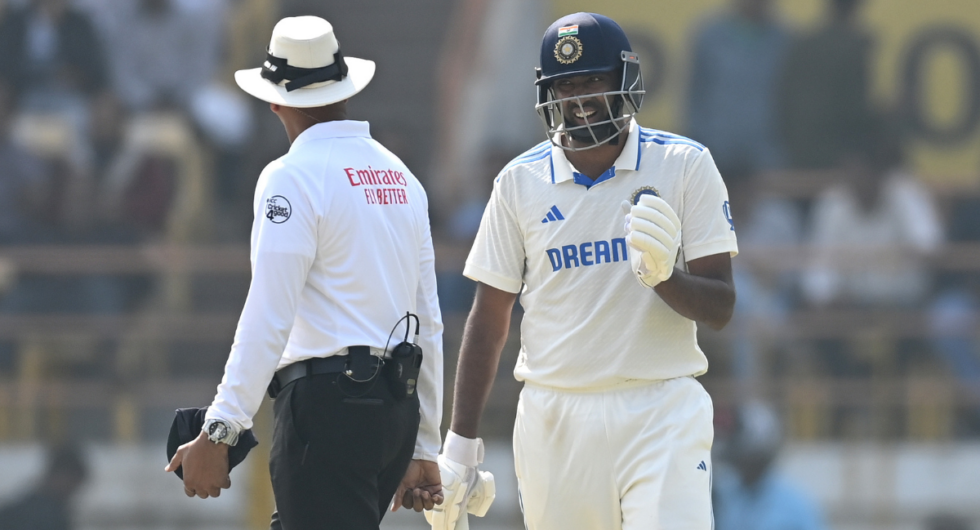Explained: Why R Ashwin could be punished further for running on the danger area

R Ashwin was not happy when India were handed five penalty runs for repeatedly running on the protected area of the wicket, and he could yet be in trouble with the ICC Code of Conduct for his actions.
India first infringed on the first evening of the Rajkot Test, with Ravindra Jadeja officially warned for running on the protected area when he was sent back attempting a single. He was dismissed on the second morning to bring Ashwin to the crease, and his long-time spin partner made the same error, setting off for a single before getting sent back. The umpires again intervened, and with India already having been warned once, incurred a five-run penalty.
However, India’s problems may not end there. Batters damaging the pitch falls in the ‘Unfair play’ section of the Laws of Cricket and the ICC’s Playing Conditions. Clause 41.13.3 outlines the punishment for doing so, and states: “The umpires together shall report the occurrence to the ICC Match Referee who shall take such action as is considered appropriate against the batter concerned.”
Article 2.10 of the ICC Code of Conduct includes “any…conduct which constitutes unfair play under clause 41 of the ICC Test playing conditions” as Ashwin fell foul of, meaning he is almost certain to be deemed guilty of a breach.
The section states: “When assessing the seriousness of the offence, the following factors (without limitation) shall be taken into account: (i) the context of the particular situation, including, without limitation and where relevant, whether the action was deliberate, reckless, negligent, and/or avoidable; (ii) the potential of the action to injure an opponent; and (iii) the degree of advantage offered by the ‘unfair play’.”
In particular, it will prove important whether Ashwin’s actions were deliberate or just negligible. Speaking on TNT Sports, Alastair Cook felt that running on the wicket was a “tactical ploy”.
🚨 NEW DAILY PODCAST 🚨
💪 England fight back in Rajkot
💯 A stunning Duckett century
🌟 500 Test wickets for R Ashwin
🎙️ @Yas_Wisden & @Ben_WisdenSpotify: https://t.co/AyMR8VMa4H
Apple Podcasts: https://t.co/jjnmKZ3bdI
YouTube: https://t.co/bhhQVyMkha#INDvENG pic.twitter.com/H1I8GSivB6— Wisden (@WisdenCricket) February 16, 2024
Penalty runs for running on the protected area are unusual, but there is precedent, and Jadeja, who was the first India batter warned in this game, has been at fault before as well. In 2016, he received three demerit points for repeatedly encroaching, with two unofficial warnings preceding an official warning, with a fourth infringement leading to a five-run penalty. Jadeja’s infringements all took place within a 27-ball innings, and, according to the match referee, “all these actions were avoidable”.
Jadeja’s was a Level Two offence, with most breaches being the less serious Level One charges. Three demerit points left him one misdemeanor away from a ban for a two-year period.
Given Ashwin was at fault for only one of the infringements, it is plausible that his indiscretion will be viewed more leniently. Ashwin currently has no active demerit points on his record. If a player accumulates four demerit points in a rolling two-year period, they will face a ban of some length.
India have already copped one code of conduct breach this series, with Jasprit Bumrah handed one demerit point for shoulder barging Ollie Pope during England’s victory at Hyderabad.
Subscribe to the Wisden Cricket YouTube channel for post-match analysis, player interviews, and much more.

